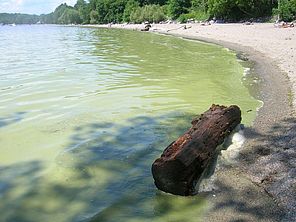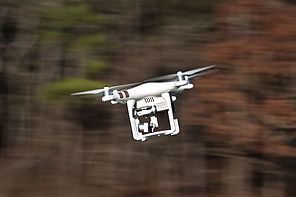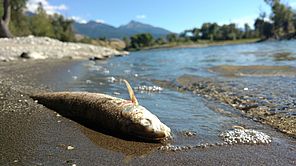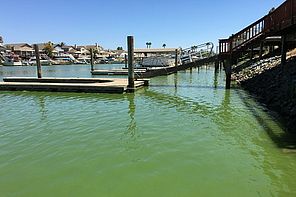Water News from Near and Far
LCC on Vermont Edition

Vermont Public Radio called on LCC for an update on the latest conditions on the lake. LCC Staff Scientist Mike Winslow was the guest on the noon call-in show, Vermont Edition. The discussion covered the causes of algae blooms and why some algae produce toxins. Blooms have been less numerous and less severe than in summers past and the show touched on some possible reasons behind that. Listen to the whole episode at vpr.net.
Big Bass Caught with a Drone

Technology is constantly changing the way we live our lives. A Montreal man recently took advantage of drones to augment his Lake Champlain fishing experience. David Freiheit used one of the remotely operated aerial vehicles to pull a fishing lure over Missisquoi Bay and successfully enticed a smallmouth bass to take the bait. A video of his exploits, and his very enthusiastic response has become popular on YouTube.
Parasitic Jellyfish Relatives in Yellowstone River

A 183-mile stretch of the Yellowstone River in Montana has been closed to recreation due to a fish die-off caused by a parasitic relative of jellyfish. Officials were concerned that the parasite could hitch a ride on recreational gear and spread to adjacent waters.
The species causing the disruption belongs to a group of microscopic parasites known as myxozoans. There are about 2,000 species of myxozoans recognized and the most well studied causes whirling disease in trout. A recent Atlantic article lays out the fascinating life cycle of these creatures which includes multiple hosts and a six cell spore stage that can lay dormant in sediments for decades until it is ingested by a worm. Myxozoans mostly attack fish, but some species infect turtles, amphibians, or shrews.
The relationship between myxozoans and jellyfish was only elucidated in the 1990s when researchers began sequencing their genes. Prior to that most of them were considered protists (like the organism that causes malaria).
California Plagued by Algae Blooms

While conditions may be relatively good on Lake Champlain this year, blue-green algae blooms in California made national news earlier this week. National Public Radio reported that California has posted danger signs for at least 30 lakes and reservoirs this summer. Most alarmingly, toxin levels have been high as well, with readings up to 150,000 micrograms of microcystin per liter. By comparison, Vermont’s standard for closing beaches is six micrograms per liter. Officials cited higher temperatures as a driving factor for this year’s blooms.
